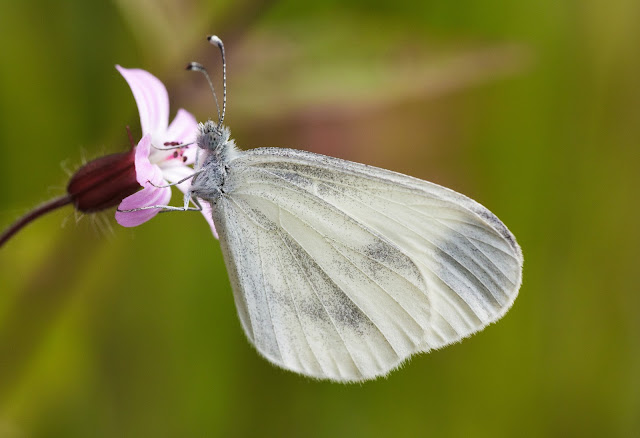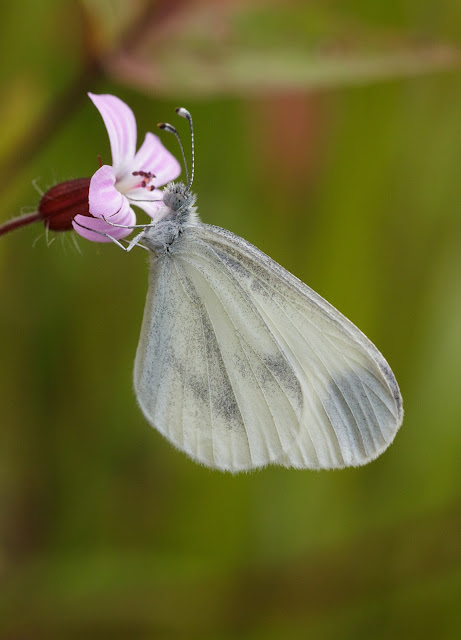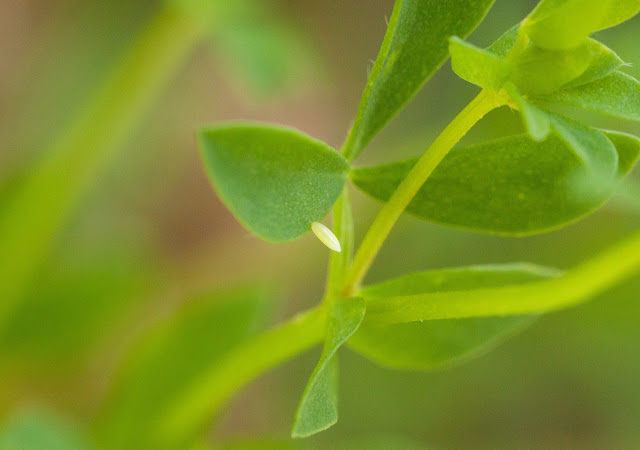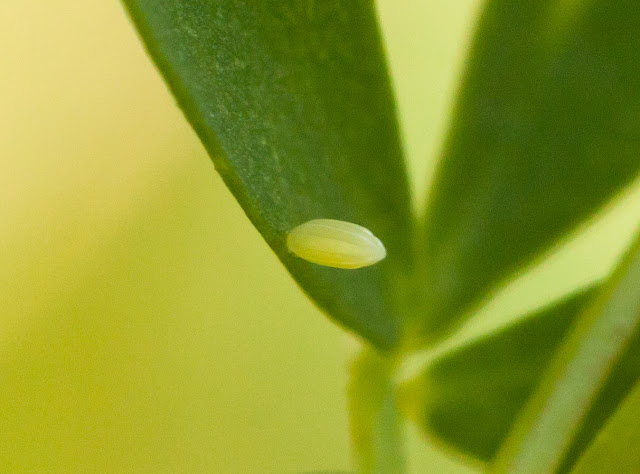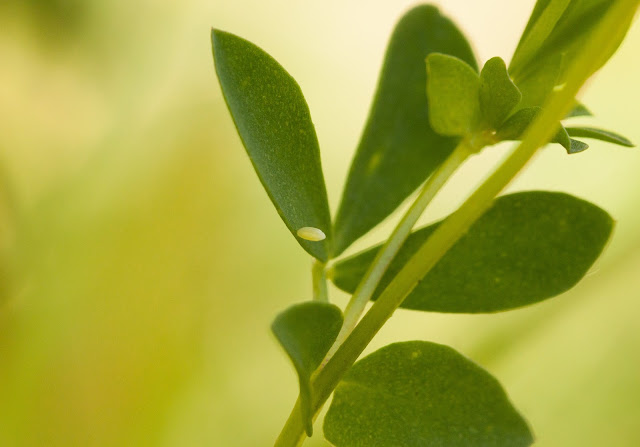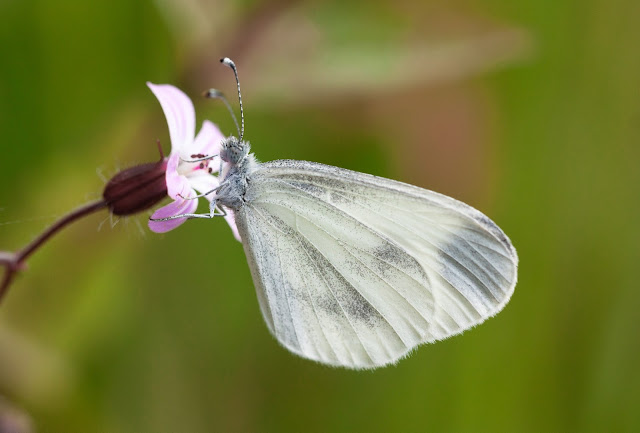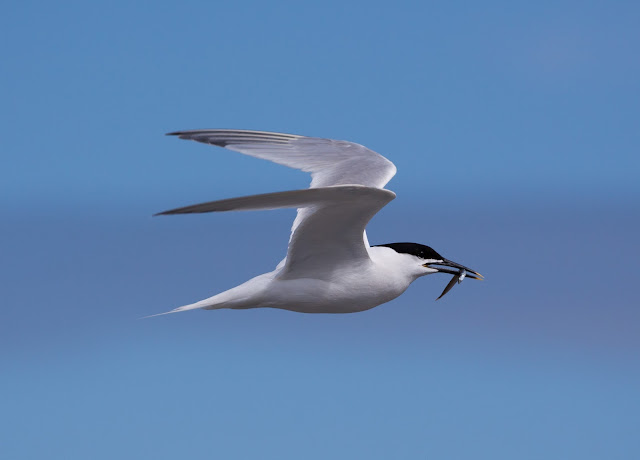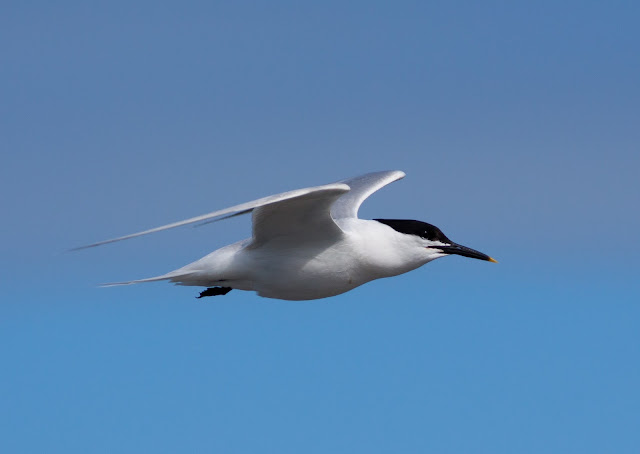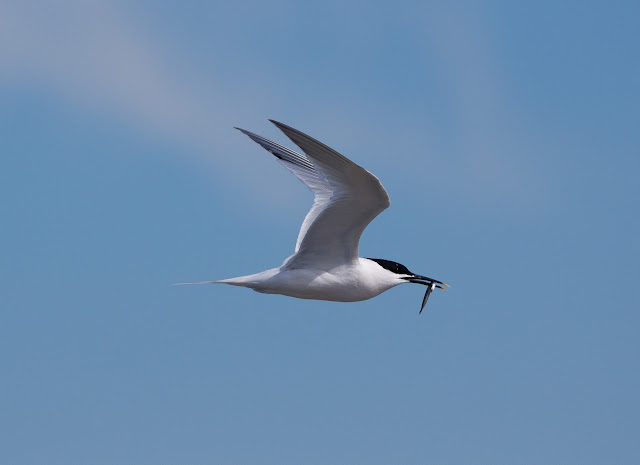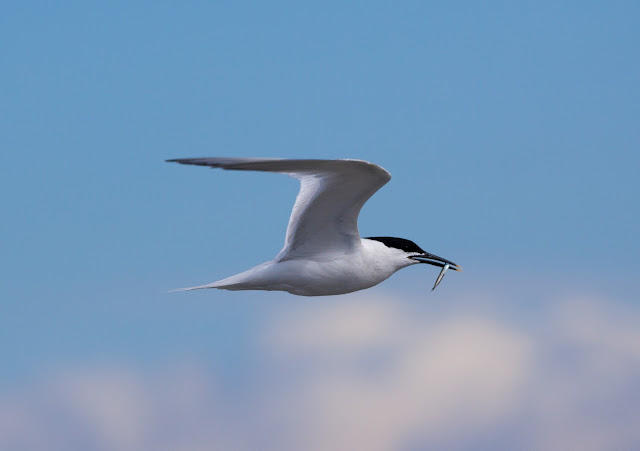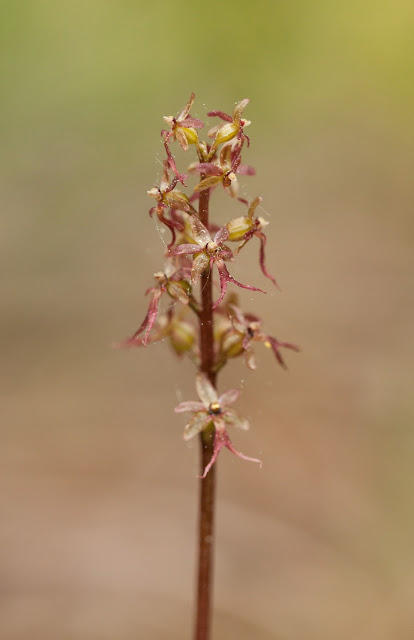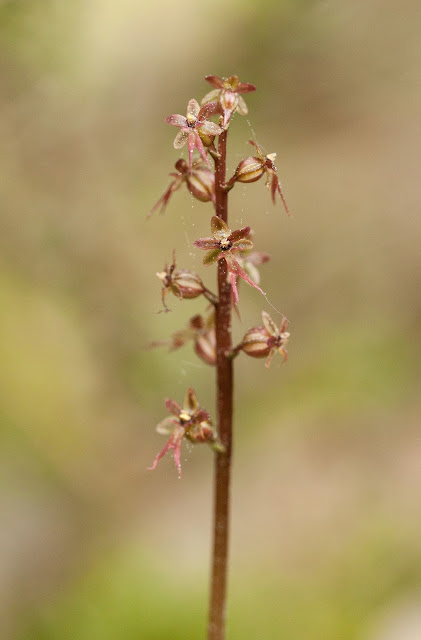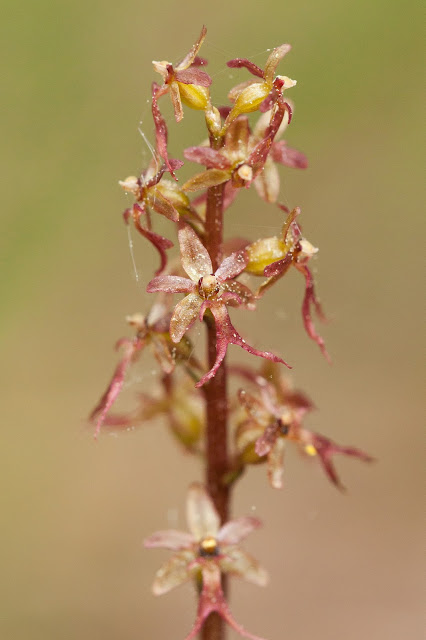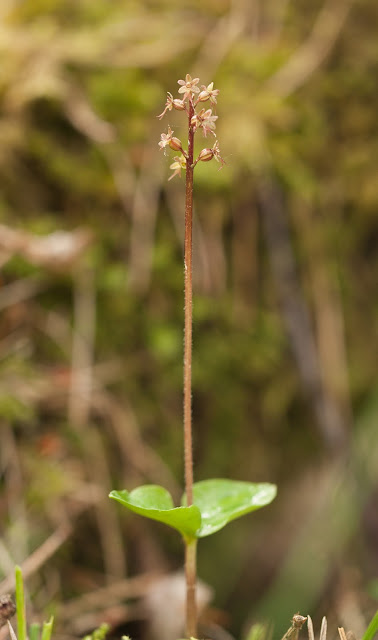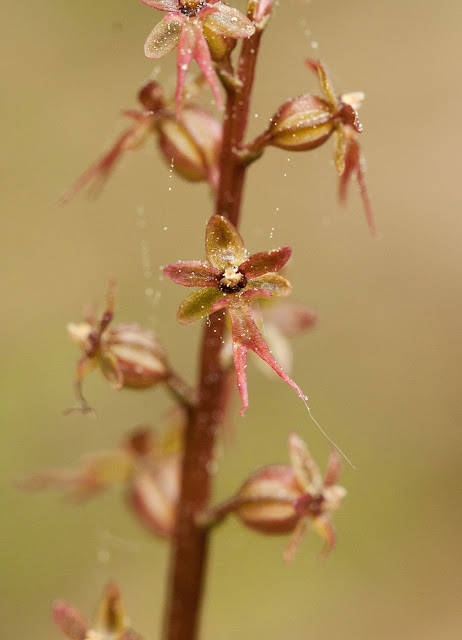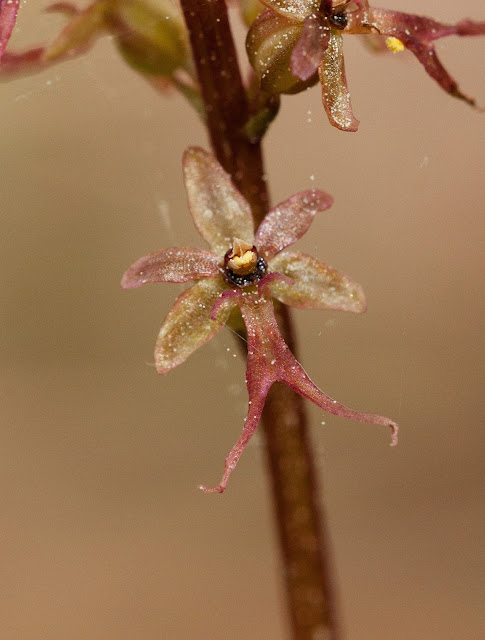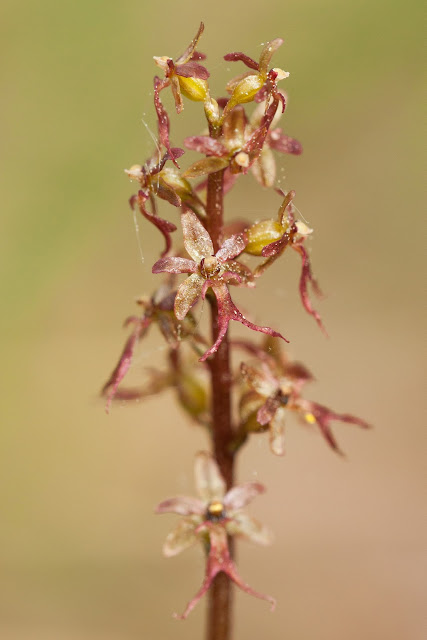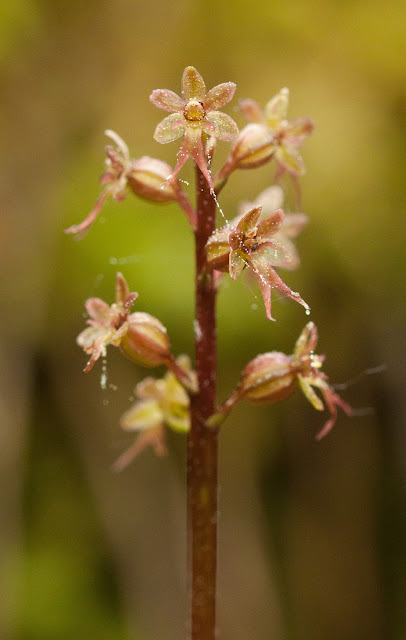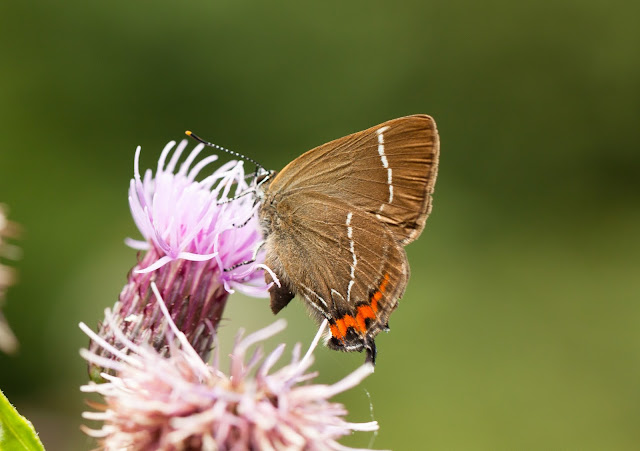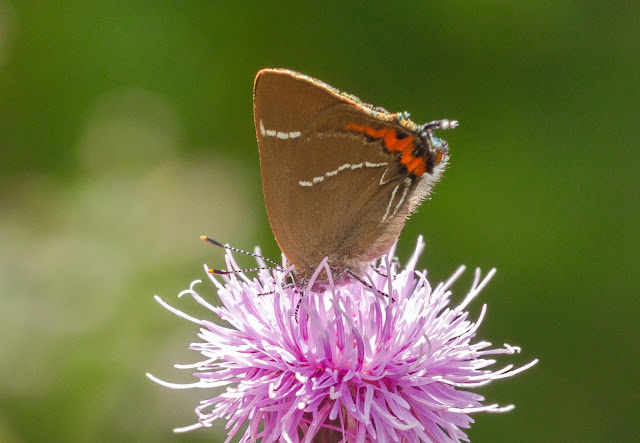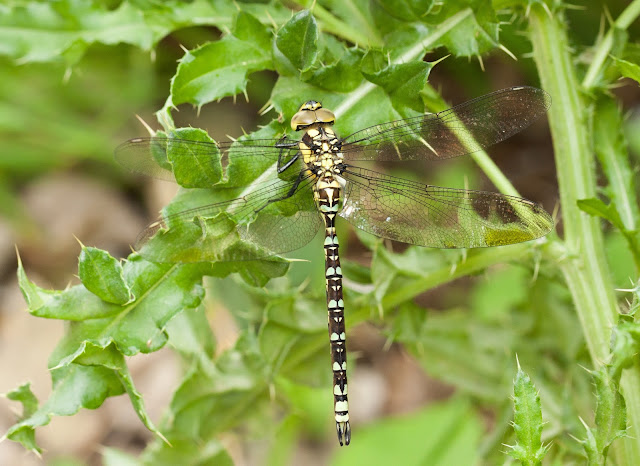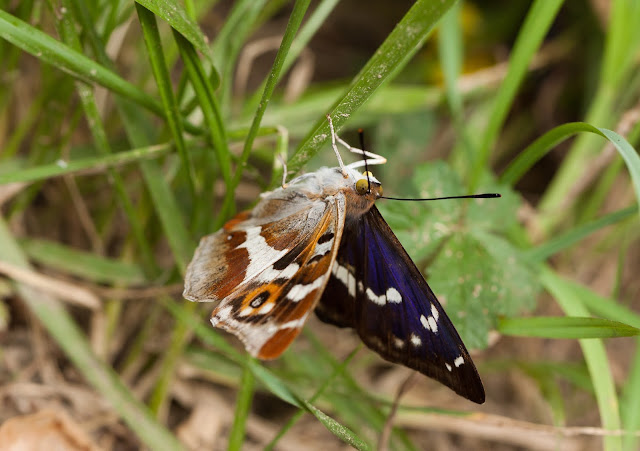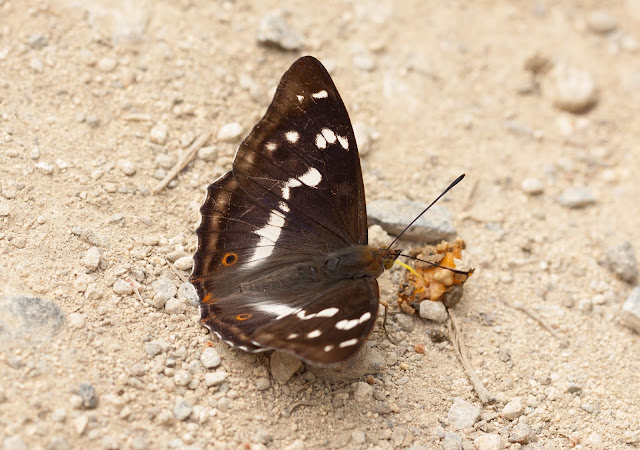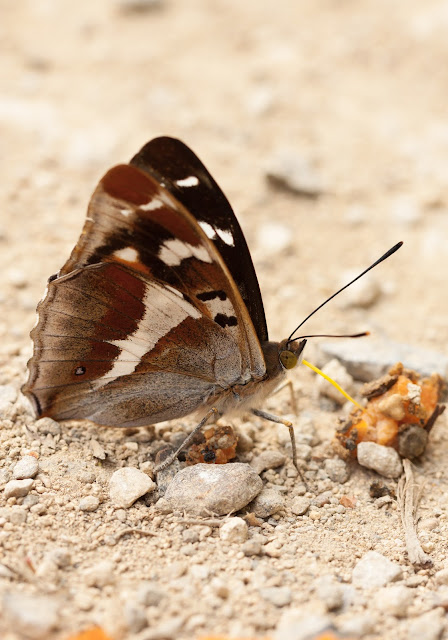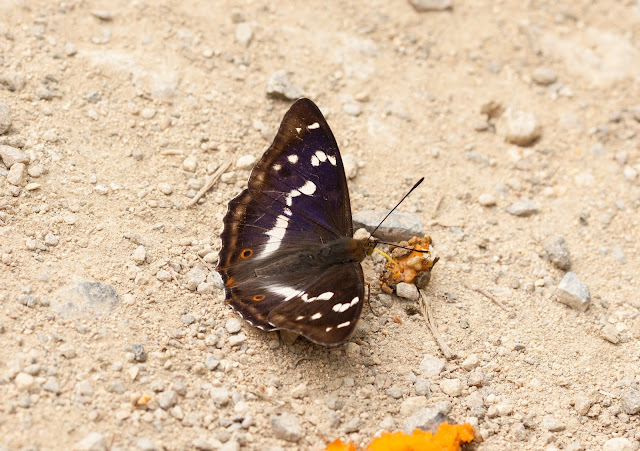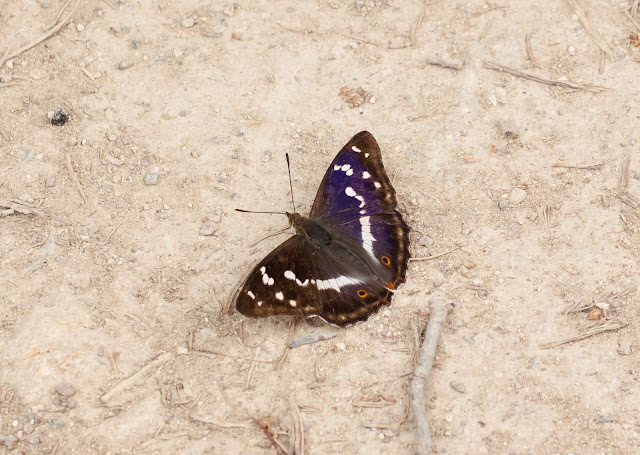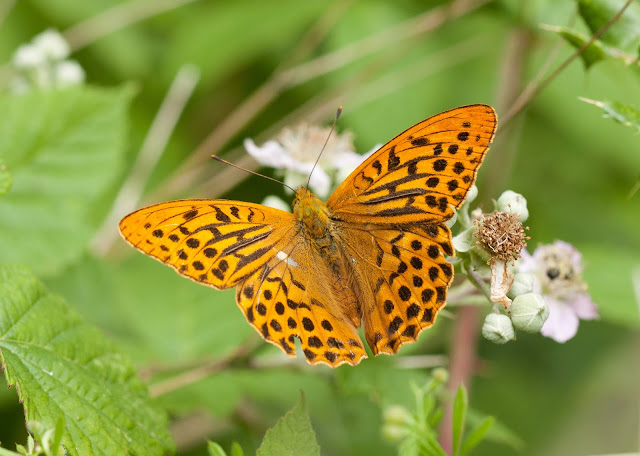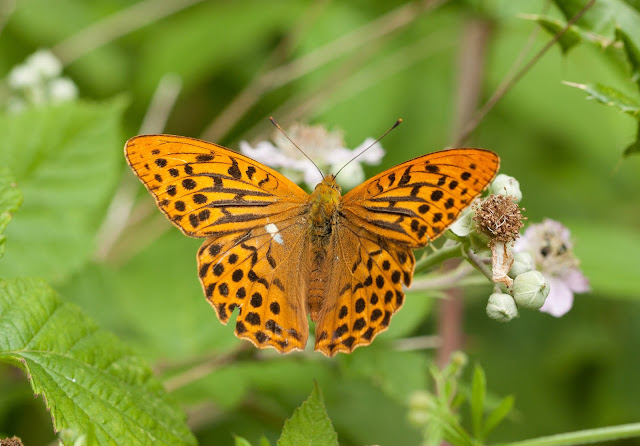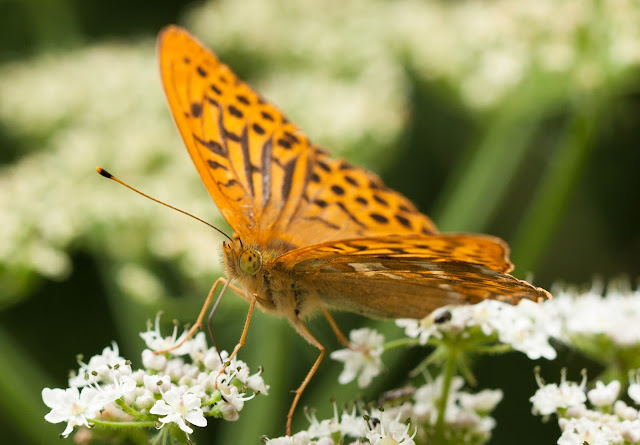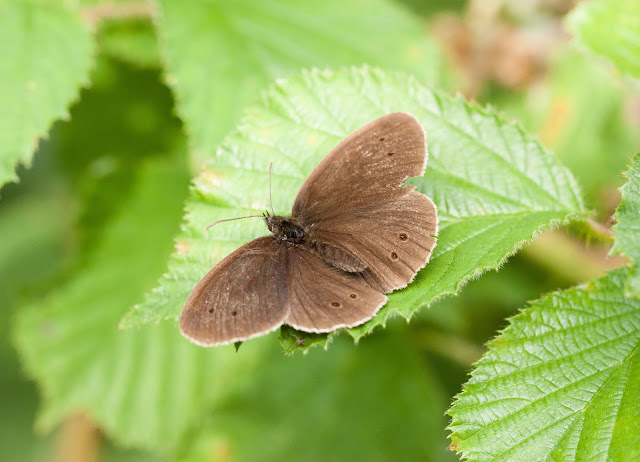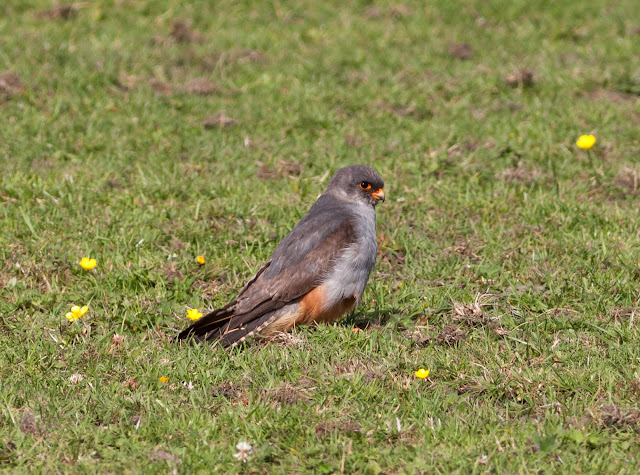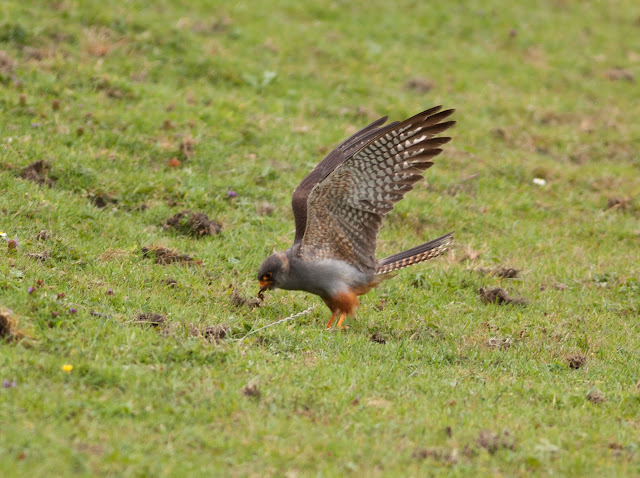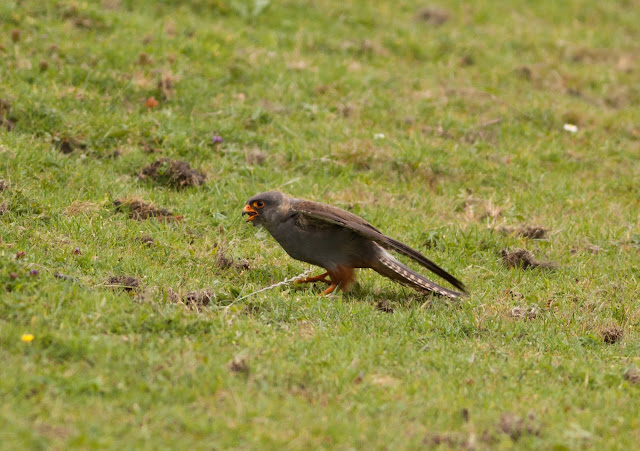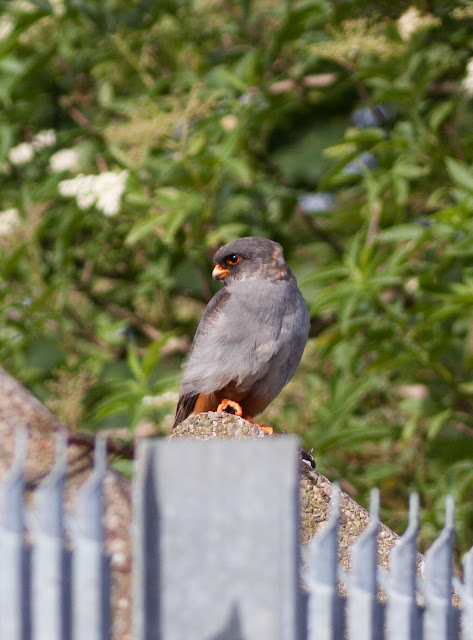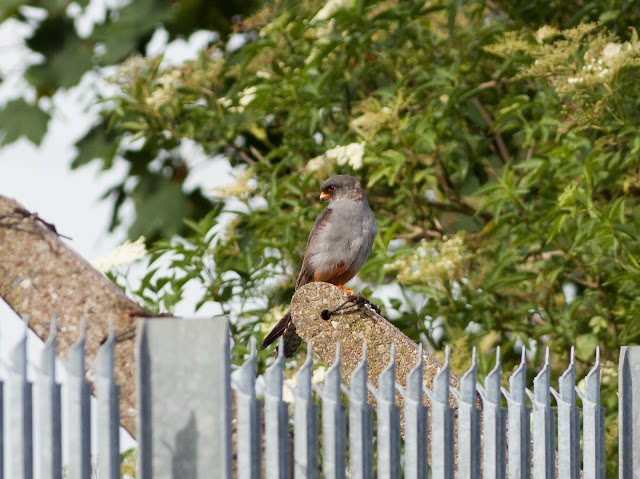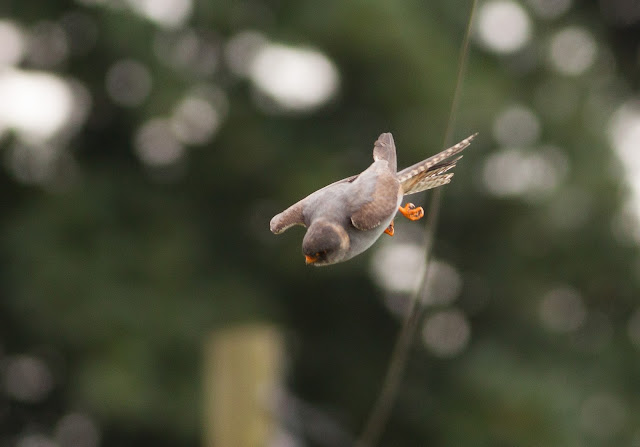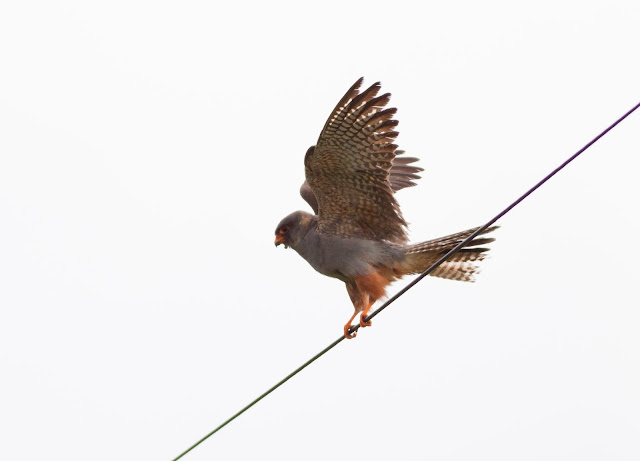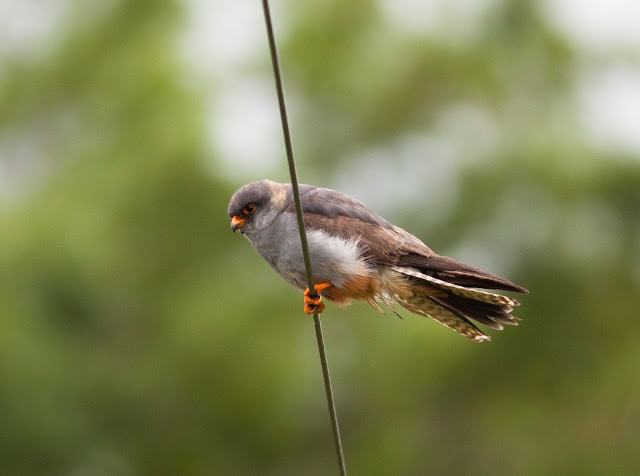With news that the second
generation of Wood Whites had begun emerging at Bury Ditches in Shropshire last
week, we decided to head down at the weekend to try and find these beautifully
dainty woodland butterflies for ourselves. With more of a south western
distribution, the substantial population in Shropshire is one of the closest,
and having only seen a single Wood White on the Burren in Ireland back in May
last year, I was keen to see them in Britain and get some photos of these
delicate butterflies.
Arriving at the car park on
what was luckily the only sunny day that week, we headed down the bridle path
in search of our target. The pathway was lined with thistles and brambles
attracting a whole range of species – Ringlets, Gatekeepers and Meadow Browns
all danced along the ride as we walked, while the larger Red Admirals, Commas
and Painted Ladies took advantage of the sunny weather to feed up.
Following the path along, it
soon became apparent that there were no Wood Whites to be seen - frustratingly
the only ‘white’ butterflies were of the Small and Green-veined variety.
Retracing our steps several times and even trying further up the hill itself,
we decided to give it one last go – this time heading past and beyond the
wooden bench where we had previously stopped and turned left.
This proved to be a good move,
and as we approached the bend I spotted a small dainty butterfly fluttering low
down along the side of the path, unmistakeable as a Wood White and with a
second individual not far behind! The sun now temporarily behind a cloud, one
settled right in front of us at the side of the track, demonstrating the
classic teardrop closed wing pose and allowing some great prolonged views as it
rested.
Travelling 100m or so down the path, we seemed to have struck a hotspot, and there must have been at least 10 in just this small section alone. At one point, we even witnesses 4 grouped together on the same leaf – more than likely 3 males battling it out over a single female. Two butterflies displaying and courting on a nearby flower head was also fantastic to see.
Travelling 100m or so down the path, we seemed to have struck a hotspot, and there must have been at least 10 in just this small section alone. At one point, we even witnesses 4 grouped together on the same leaf – more than likely 3 males battling it out over a single female. Two butterflies displaying and courting on a nearby flower head was also fantastic to see.
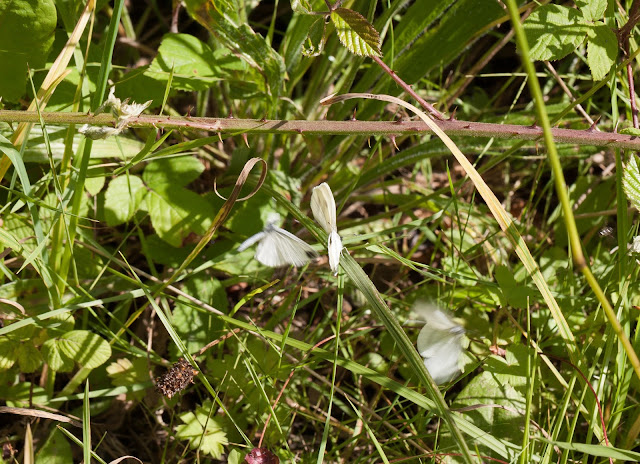 |
| Males attracted to a female |
Tending to stick very close to the ground and not fly higher than a metre, we watched as the males patrolled along the edges of the ride in search of any females. With individuals in England emerging in May and June, we were now on the second generation (which emerges at the end of July and in to August) where individuals are slightly smaller and the males have a touch more black on the wingtips.
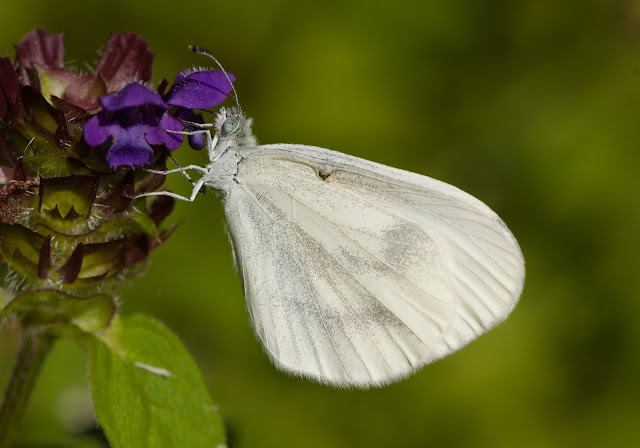 |
| A female - no black on the wing tips |
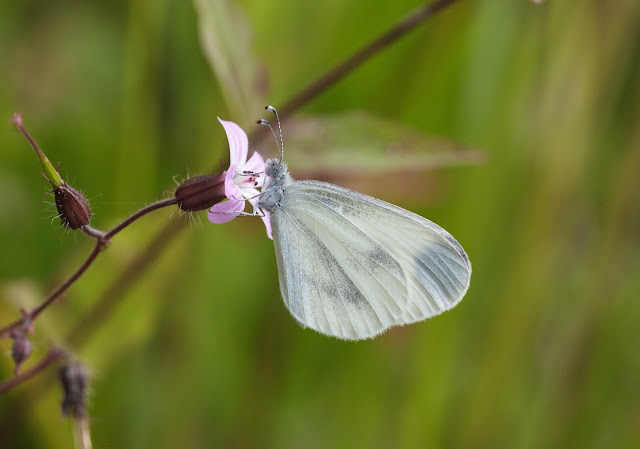 |
| The black tips to the wings indicate this is a male |
The difference in plant
species between this area and closer to the car park was also apparent, with
much less vegetation at the edge of this stretch of path – the sides here were
much less overgrown than by the car park. It was clear as to why the Wood
Whites were favouring this section and not earlier on up the path, as their
food plants of vetches and trefoils were much easier to find in the thin grass without
competition from the more dominant brambles.
Wood Whites have only very recently been separated from the virtually identical Cryptic Wood White (originally described as Real’s Wood White before this species was itself split in 2011) and the latter can only be found in Ireland.
Wood Whites have only very recently been separated from the virtually identical Cryptic Wood White (originally described as Real’s Wood White before this species was itself split in 2011) and the latter can only be found in Ireland.
The two species share many of
the same characteristics in terms of both appearance and behaviour, but
curiously the evidence suggests that the distribution of the two doesn’t
overlap – Cryptic Wood Whites don’t occur outside of Ireland in Britain, and
the Wood White is restricted to just the Burren (where Cryptic Wood Whites are
absent) in Ireland whilst occurring throughout the south of Britain. Adults can
only be identified by a detailed examination of their genitals, so this
difference in range is the key factor in determining which of the two species
it will be.
Wood Whites have suffered
dramatically over the decades, and this species is now in serious decline in
several of its former strongholds. With woodland rides becoming too overgrown
for this delicate butterfly and numbers dropping accordingly, it would be
disastrous to lose this beautiful species from our countryside. Luckily habitat
management is underway, and several sites still remain as strongholds for this
enigmatic white of the woods.
